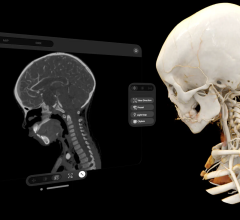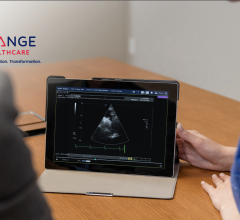
The integration of a cardiovascular information system (CVIS) with electronic medical records (EMR) ensures a seamless flow of data between providers and helps physicians access a more comprehensive picture of a patient’s medical history, leading to better outcomes.
“It’s always great when everyone has access to patient medical records in their entirety. It always provides better care for the patient,” according to Yabiz Sedghi, M.D., Interventional Cardiologist at East Alabama Medical Center. “It’s vastly preferable to know all the details of the patient’s health history.”
What Is CVIS?
A CVIS is the platform to store, retrieve and analyze data, images, labs and other information related to a patient’s cardiac care. This technology also allows remote access to files by clinicians who might be off-premises and need to consult from afar.
While designed to be cardio-focused, non-cardiac patient records may also contain relevant data from prior tests or treatments. Integration of all this information within the EMR system provides a 360-degree view for the cardiologist seeking to generate the most-informed diagnoses and treatment plans. Likewise, the flow of cardiology data to the broader EMR system ensures that referring providers have access to all patient records.
Better Patient Outcomes
With the array of cardiovascular treatment options available and increased demand on this physician specialty, speed and ease of access to information is critical. The technology facilitated connection the between CVIS and EMR allows clinicians to access more detailed information, select from a menu of pre-designed reports, and query and analyze specific information for longitudinal understanding of their cardiac patients. This can also mean a faster read on a case, noted Sedghi.
“One of the things that pushed us toward an integrated CVIS with Hitachi was that the download speed on the images was so fast. An echo study could have 100 images, and if you are waiting for them to download, it can be very time-consuming,” she explained.
“Another advantage is you don’t actually have to read through all the patient’s detailed reports. The codes in the EMR will populate into the reports I pull out,” Sedghi said. “If the patient had an echocardiogram a month ago and the individual shows up in the hospital, we can access those results and don’t need to order another echo.”
Sharing information access among other colleagues also broadens the entire healthcare knowledge base. Sedghi is excited about this. “Once the study is read, it’s in our EMR. The biggest advantage? People outside our group can access our imaging studies — the whole hospital system, including other medical specialties, can read them.”
The Advantages of Cloud-Based CVIS
The CVIS/EMR combination proved to be a resounding success for Matthew Martin, AAMI-certified biomedical equipment technician. Martin is the lead tech at Massena Hospital, a small acute care facility in Massena, New York that’s part of a larger healthcare system. A 20-year veteran, he was involved in the integration of CVIS with the hospital’s EMR from the beginning.
“We had an issue just last fall,” he said. “On Halloween weekend, most of the hospitals in the northeast got hit with ransomware that crashed their networks. However, we had Vidistar, which is very robust. When we lost connectivity to the ‘mothership’ — the main hospital network — the radiology director called me to say that none of the physicians could view their images. I immediately changed the ‘send-to’ destination for the patient information to Vidistar and quickly trained my reading radiologist how to use the system. The result? We kept up and running, whereas other hospitals were unable to serve their cardiac patients.”
Martin’s fast thinking and the availability of a cloud-hosted service meant that the patient data and images, which were protected by aggressive cybersecurity, were available to the physicians who urgently needed them.
Shortly after, the hospital system executives contacted him and asked him how long it would take to implement the technology in their main facility while they sorted out the ransomware issue. He got the necessary approvals and resources to proceed, and within 48 hours, he had multiple modalities and end users on the CVIS system. “It was a temporary solution, so we were easily able to transfer the Hitachi data back to the mothership’s picture archiving and communication (PAC) system once the crisis had passed.”
Every Minute Matters
With cardiac disease-related deaths on the rise, there is increased demand for integrated systems.[1] Bryan Burnside, radiology director at Merit Health Madison in Canton, Miss., notes that cardiac patients’ lives can depend on this technology.
“Any time we are dealing with the heart, we assume it’s an urgent situation,” Burnside said. “That’s what’s key about CVIS-EMR integration. Having all that information available any time of the day or night allows the physician to make immediate decisions — decisions that will have impacts ranging from preserving the patient’s quality of life to actually saving that life.”
This capability is enhanced by the integrated system’s accessibility to multiple physicians. “They can confer on a case via a phone call while all viewing the same data. That level of access enables physicians to make the best-informed care decisions in tight windows of time,” Burnside explained.
The technology has also been useful in cases where Burnside’s team was performing a routine heart catheterization and needed to consult with a cardiovascular surgeon before proceeding further. “With Vidistar, we’re able to immediately send data to the surgeon while our patient is still under sedation. The doctor is able to make a quick determination about whether to move forward with a complex percutaneous coronary intervention (PCI) or get the patient set up for other treatment options,” he said.
A Growing Need
The CVIS marketplace is also growing.[2] As the incidence of cardiovascular disorders increases and integrated information technology solutions become more readily available and sophisticated, physicians will increasingly be able to share critical information, resulting in better diagnoses — and better patient outcomes.
Editor's note: This blog is the second in a four-part series about the benefits of cardiovascular information systems. The first blog is here and the third blog is here. The last article in the series is The Benefits of Data Analytics in Clinical Reporting. To learn more visit www.hitachihealthcare.com/it
References:
2. https://www.millioninsights.com/industry-reports/cardiovascular-information-system-cvis-market


 March 21, 2024
March 21, 2024 








